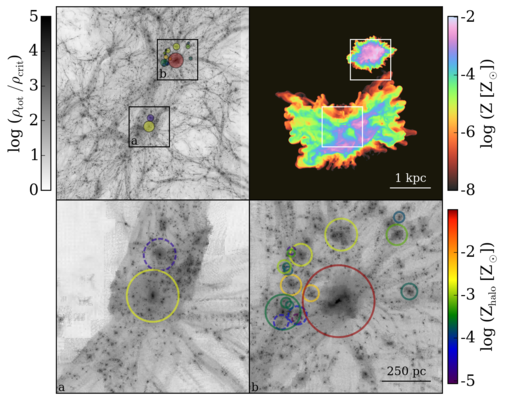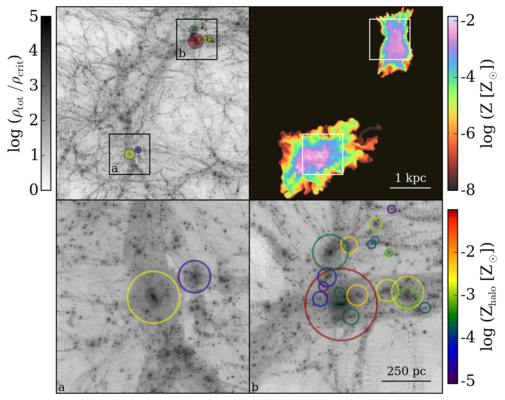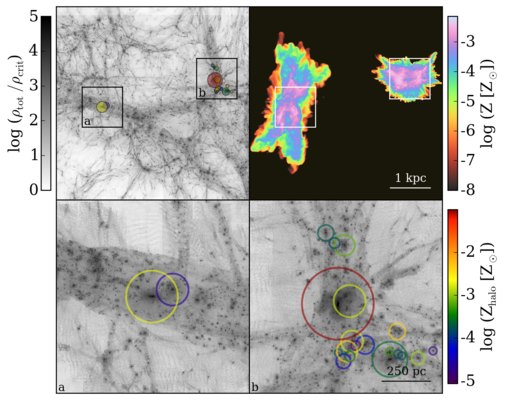Forming the First Population II Star
Here you will find movies and images from the simulations featured in The First Population II Stars Formed in Externally Enriched Mini-halos, by Britton Smith, John Wise, Brian O'Shea, Michael Norman, and Sadegh Khochfar (2015). For more information, contact me.
The movie above shows the evolution of the main simulation. The left panel shows the gas density and the right panel shows the temperature. The first Pop III star forms at redshift 23.7 and shines for roughly 4 Myr before exploding as a core-collapse supernova, at which time the right panel changes to show the metallicity. About 60 Myr after the first supernova, we zoom in on the formation site of the second Pop III star. Shortly after it explodes, the supernova blast-wave collides with a nearby halo moving in the opposite direction. The passing blast-wave and a merger event induce turbulence, which allows the metals from the supernova to mix into the center of the halo. We continue to zoom in to follow the dense gas in the core of the halo as it undergoes runaway collapse. For much of the collapse, we only see the central core become smaller and denser. Eventually, dust cooling becomes efficient, causing the gas to cool quickly and fragment into multiple clumps. We end at a scale of 100 proper AU looking at the pre-stellar cores that will go on to form the first low-mass stars.
The Bigger Picture
The images above show the final state of the simulation in the x, y, and z directions. The top-left panels show the total density field with boxes indicating the two regions in which Pop III stars have formed. The top-right panels show the metallicity. The bottom panels show the regions around the two Pop III stars in more detail. The circles denote halos in which metals have mixed into gas with density of at least 10-25 g/cm3, where the color of the circle corresponds to the metallicity. Click on any image to see a high-resolution version.


